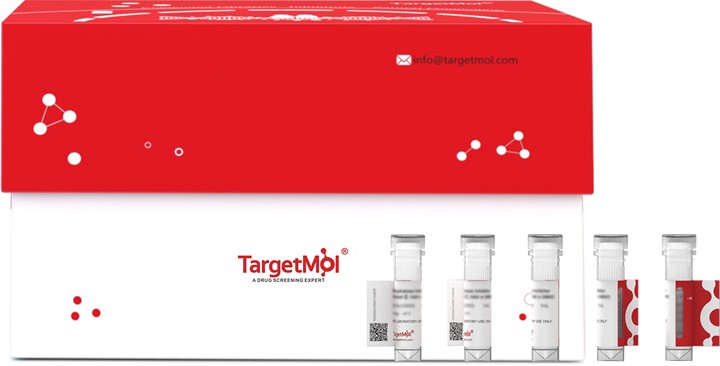 Your shopping cart is currently empty
Your shopping cart is currently empty
NTAQ1 Protein, Human, Recombinant (GST)
Human protein N-terminal glutamine amidohydrolase (WDYHV1) is an enzyme that in humans is encoded by the WDYHV1 gene, belongs to the NTAQ1 family.WDYHV1 mediates the side-chain deamidation of N-terminal glutamine residues to glutamate, which is an important step in N-end rule pathway of protein degradation. Conversion of the resulting N-terminal glutamine to glutamate renders the protein susceptible to arginylation, polyubiquitination and degradation as specified by the N-end rule. However,it does not act on substrates with internal or C-terminal glutamine andnon-glutamine residues in any position. With the exception of proline, all tested second-position residues on substrate peptides do not greatly influence the activity. In contrast, a proline at position 2, virtually abolishes deamidation of N-terminal glutamine.

NTAQ1 Protein, Human, Recombinant (GST)
| Pack Size | Price | USA Warehouse | Global Warehouse | Quantity |
|---|---|---|---|---|
| 5 μg | $80 | 7-10 days | 7-10 days | |
| 10 μg | $129 | 7-10 days | 7-10 days | |
| 20 μg | $198 | 7-10 days | 7-10 days | |
| 50 μg | $390 | 7-10 days | 7-10 days | |
| 100 μg | $626 | 7-10 days | 7-10 days | |
| 200 μg | $987 | 7-10 days | 7-10 days | |
| 500 μg | $1,900 | 7-10 days | 7-10 days | |
| 1 mg | $2,730 | 7-10 days | 7-10 days |
Product Information
| Biological Activity | Activity has not been tested. It is theoretically active, but we cannot guarantee it. If you require protein activity, we recommend choosing the eukaryotic expression version first. |
| Description | Human protein N-terminal glutamine amidohydrolase (WDYHV1) is an enzyme that in humans is encoded by the WDYHV1 gene, belongs to the NTAQ1 family.WDYHV1 mediates the side-chain deamidation of N-terminal glutamine residues to glutamate, which is an important step in N-end rule pathway of protein degradation. Conversion of the resulting N-terminal glutamine to glutamate renders the protein susceptible to arginylation, polyubiquitination and degradation as specified by the N-end rule. However,it does not act on substrates with internal or C-terminal glutamine andnon-glutamine residues in any position. With the exception of proline, all tested second-position residues on substrate peptides do not greatly influence the activity. In contrast, a proline at position 2, virtually abolishes deamidation of N-terminal glutamine. |
| Species | Human |
| Expression System | E. coli |
| Tag | N-GST |
| Accession Number | AAH08781.1 |
| Synonyms | WDYHV1,Protein N-terminal glutamine amidohydrolase,Protein NH2-terminal glutamine deamidase,N-terminal Gln amidase,NTAQ1,Nt(Q)-amidase,C8orf32 |
| Amino Acid | Met1-Cys205 |
| Construction | Met1-Cys205 |
| Protein Purity | Greater than 95% as determined by reducing SDS-PAGE. (QC verified) |
| Molecular Weight | 45-50 KDa (reducing condition) |
| Endotoxin | < 0.1 ng/µg (1 EU/µg) as determined by LAL test. |
| Formulation | Supplied as a 0.2 μm filtered solution of PBS, 100 mM GSH, 1% TritonX-100, 15% Glycerol, pH 7.4. |
| Stability & Storage | Lyophilized powders can be stably stored for over 12 months, while liquid products can be stored for 6-12 months at -80°C. For reconstituted protein solutions, the solution can be stored at -20°C to -80°C for at least 3 months. Please avoid multiple freeze-thaw cycles and store products in aliquots. |
| Shipping | Shipping with blue ice. |
| Research Background | Human protein N-terminal glutamine amidohydrolase (WDYHV1) is an enzyme that in humans is encoded by the WDYHV1 gene, belongs to the NTAQ1 family.WDYHV1 mediates the side-chain deamidation of N-terminal glutamine residues to glutamate, which is an important step in N-end rule pathway of protein degradation. Conversion of the resulting N-terminal glutamine to glutamate renders the protein susceptible to arginylation, polyubiquitination and degradation as specified by the N-end rule. However,it does not act on substrates with internal or C-terminal glutamine andnon-glutamine residues in any position. With the exception of proline, all tested second-position residues on substrate peptides do not greatly influence the activity. In contrast, a proline at position 2, virtually abolishes deamidation of N-terminal glutamine. |
Dose Conversion
Calculator
Tech Support
| Size | Quantity | Unit Price | Amount | Operation |
|---|

Copyright © 2015-2025 TargetMol Chemicals Inc. All Rights Reserved.



